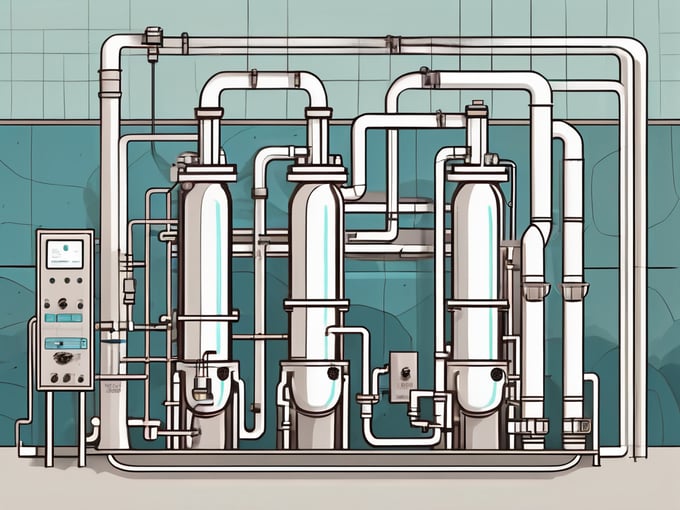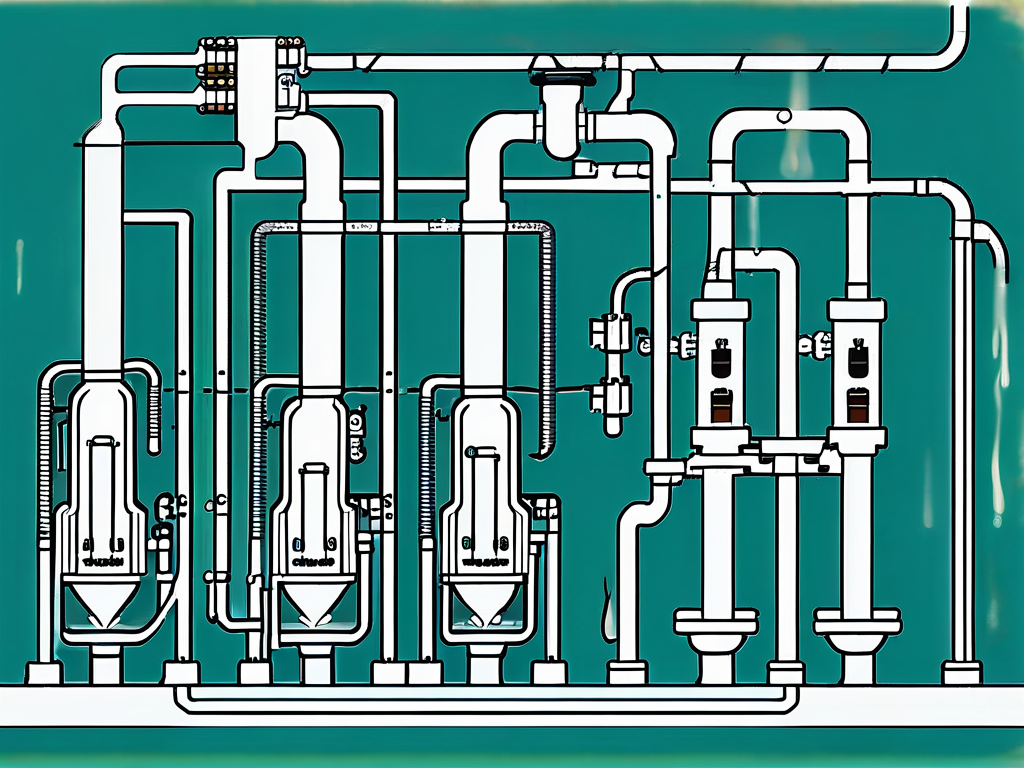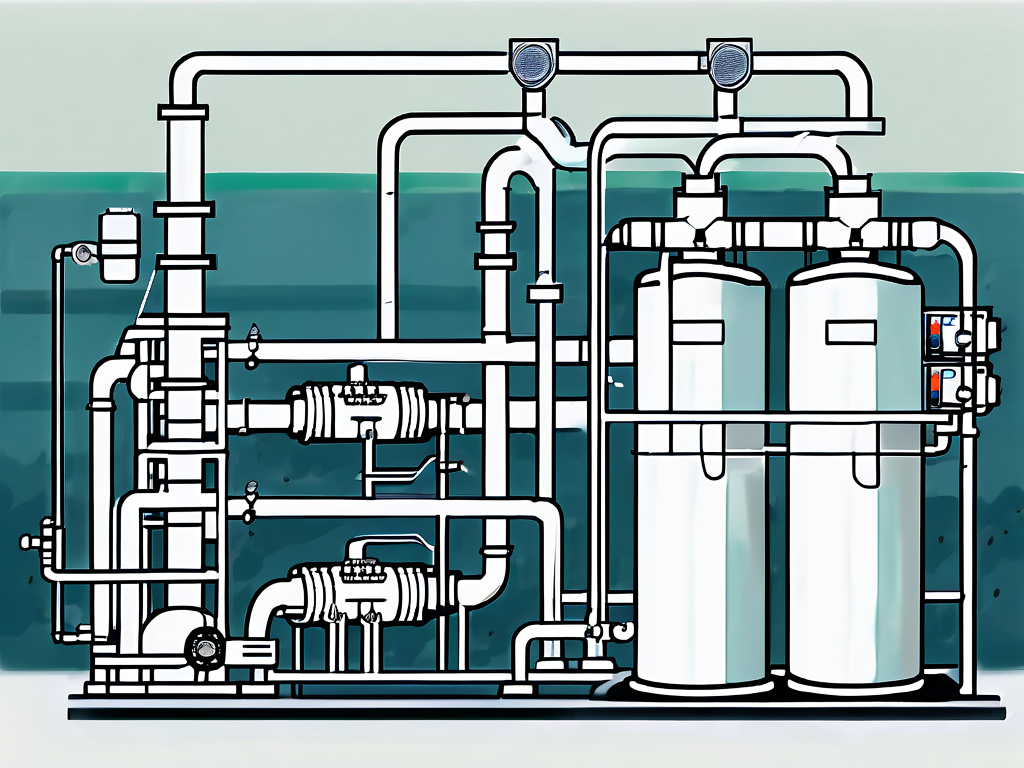
Filtration Rate: Wastewater Treatment Explained
The filtration rate is a crucial concept in the field of wastewater treatment. It refers to the speed at which water passes through a filter during the treatment process. This rate is typically measured in terms of volume per unit of time and is a key determinant of the efficiency and effectiveness of a wastewater treatment system.
Understanding the filtration rate is essential for designing, operating, and maintaining wastewater treatment facilities. It directly impacts the quality of the treated water and the overall performance of the treatment process. This article provides an in-depth exploration of the filtration rate in the context of wastewater treatment.
Concept of Filtration Rate
The filtration rate, also known as the hydraulic loading rate, is a measure of the volume of water that a filter can process within a specific time frame. It is usually expressed in terms of gallons per minute (GPM) or cubic meters per hour (m3/h). The filtration rate is a critical parameter that influences the efficiency of the filtration process and the quality of the treated water.
The filtration rate is determined by several factors, including the size and type of the filter, the characteristics of the wastewater, and the operational conditions of the treatment system. A higher filtration rate may lead to less effective treatment, as the wastewater has less contact time with the filter media. Conversely, a lower filtration rate may result in more thorough treatment but can also increase the risk of filter clogging and reduce the overall capacity of the treatment system.
Importance of Filtration Rate
The filtration rate plays a vital role in wastewater treatment. It directly affects the removal efficiency of contaminants and the overall performance of the treatment process. A properly managed filtration rate can enhance the effectiveness of the treatment and improve the quality of the treated water.
Moreover, the filtration rate is a key factor in the design and operation of wastewater treatment facilities. It helps determine the size and number of filters needed, the required residence time in the filter, and the optimal operating conditions. Understanding and controlling the filtration rate is therefore essential for ensuring the reliability and sustainability of wastewater treatment systems.
Factors Influencing Filtration Rate
The filtration rate is influenced by a variety of factors. These include the properties of the wastewater, such as its temperature, viscosity, and concentration of suspended solids; the characteristics of the filter, including its size, type, and condition; and the operational conditions of the treatment system, such as the flow rate and pressure.
For instance, a higher temperature can increase the filtration rate by reducing the viscosity of the water and enhancing the activity of microorganisms in biological filters. Similarly, a higher concentration of suspended solids can decrease the filtration rate by causing more rapid clogging of the filter. Therefore, managing these factors is crucial for maintaining an appropriate filtration rate and ensuring effective wastewater treatment.
Types of Filtration Processes
There are several types of filtration processes used in wastewater treatment, each with its own typical filtration rate. These include gravity filtration, pressure filtration, and biological filtration. The choice of filtration process depends on the specific requirements of the treatment system and the characteristics of the wastewater.
Gravity filtration is a process where wastewater flows through a filter under the force of gravity. It is commonly used for the removal of suspended solids and is characterized by a relatively low filtration rate. Pressure filtration, on the other hand, involves forcing wastewater through a filter under pressure. It is typically used for the removal of finer particles and has a higher filtration rate than gravity filtration.
Gravity Filtration
Gravity filtration is a simple and cost-effective method for treating wastewater. It involves passing the wastewater through a filter under the force of gravity. The filtration rate in gravity filtration is typically lower than in other types of filtration, which allows for more effective removal of suspended solids.
The filtration rate in gravity filtration is influenced by several factors, including the size and type of the filter media, the depth of the filter bed, and the characteristics of the wastewater. By adjusting these factors, the filtration rate can be optimized to achieve the desired treatment performance.
Pressure Filtration
Pressure filtration is a more intensive method of treating wastewater. It involves forcing the wastewater through a filter under pressure, which allows for a higher filtration rate and more efficient removal of finer particles. Pressure filtration is commonly used in applications where a high degree of treatment is required, such as in the production of drinking water.
The filtration rate in pressure filtration is determined by the pressure differential across the filter, the size and type of the filter media, and the characteristics of the wastewater. Managing these factors is crucial for maintaining an appropriate filtration rate and ensuring effective treatment.
Measuring Filtration Rate
The filtration rate is typically measured in terms of the volume of water that passes through a filter per unit of time. This can be done using flow meters, which measure the flow rate of the water, and timing devices, which measure the time it takes for a certain volume of water to pass through the filter.
Accurate measurement of the filtration rate is crucial for monitoring and controlling the performance of a wastewater treatment system. It allows for timely detection of changes in the filtration process, such as filter clogging or changes in the characteristics of the wastewater, and enables appropriate adjustments to be made to the operating conditions.
Flow Meters
Flow meters are devices that measure the flow rate of a fluid. They are commonly used in wastewater treatment to measure the filtration rate. There are several types of flow meters, including turbine flow meters, ultrasonic flow meters, and magnetic flow meters. Each type has its own advantages and limitations, and the choice of flow meter depends on the specific requirements of the treatment system.
Turbine flow meters, for example, are suitable for measuring the flow rate of clean water with low viscosity, but they can be affected by the presence of suspended solids in the wastewater. Ultrasonic flow meters, on the other hand, are non-intrusive and can measure the flow rate of a wide range of fluids, but they require a certain minimum flow velocity to operate accurately. Therefore, selecting the appropriate flow meter is crucial for obtaining reliable measurements of the filtration rate.
Timing Devices
Timing devices are another method for measuring the filtration rate. They involve measuring the time it takes for a certain volume of water to pass through the filter. This can be done using a stopwatch or a digital timer, and the volume of water can be determined by collecting the filtered water in a container of known volume.
This method is simple and inexpensive, but it may not be as accurate as using a flow meter, especially for higher filtration rates. However, it can be a useful tool for monitoring the performance of a filter over time and detecting changes in the filtration rate.
Effects of Filtration Rate on Treatment Performance
The filtration rate has a significant impact on the performance of a wastewater treatment system. It affects the removal efficiency of contaminants, the quality of the treated water, and the operational stability of the system. Therefore, understanding and managing the filtration rate is crucial for achieving effective wastewater treatment.

A higher filtration rate can increase the capacity of the treatment system and reduce the residence time in the filter, which can be beneficial for treating large volumes of wastewater. However, it can also lead to less effective treatment, as the wastewater has less contact time with the filter media, and it can increase the risk of filter clogging, especially when treating wastewater with a high concentration of suspended solids.
Removal Efficiency of Contaminants
The filtration rate directly affects the removal efficiency of contaminants in wastewater treatment. A lower filtration rate allows for longer contact time between the wastewater and the filter media, which can enhance the removal of suspended solids, organic matter, and other contaminants. However, a too low filtration rate can lead to excessive accumulation of solids on the filter surface, which can cause clogging and reduce the overall performance of the treatment system.
On the other hand, a higher filtration rate can reduce the contact time and thus the removal efficiency of contaminants. It can also increase the velocity of the water, which can dislodge previously captured particles and cause them to be carried out with the filtered water. Therefore, maintaining an appropriate filtration rate is crucial for achieving optimal removal of contaminants.
Quality of Treated Water
The filtration rate also affects the quality of the treated water. A lower filtration rate can result in more thorough treatment and higher quality treated water, as it allows for more effective removal of contaminants. However, if the filtration rate is too low, it can lead to stagnation of the water in the filter, which can cause the growth of undesirable microorganisms and degrade the quality of the treated water.
A higher filtration rate, on the other hand, can lead to less effective treatment and lower quality treated water, as it reduces the contact time between the wastewater and the filter media. It can also cause turbulence in the water, which can re-suspend captured particles and degrade the clarity of the treated water. Therefore, controlling the filtration rate is essential for ensuring the quality of the treated water.
Adjusting Filtration Rate
The filtration rate in a wastewater treatment system can be adjusted by modifying the operational conditions or the design of the system. This can involve changing the flow rate of the wastewater, the pressure differential across the filter, or the size and type of the filter media. Adjusting the filtration rate can help optimize the performance of the treatment system and improve the quality of the treated water.

However, changing the filtration rate can also have unintended consequences. For instance, increasing the filtration rate can lead to more rapid clogging of the filter and reduce its lifespan. Conversely, decreasing the filtration rate can increase the residence time in the filter and potentially lead to the growth of undesirable microorganisms. Therefore, any adjustments to the filtration rate should be made carefully and with consideration of the overall performance of the treatment system.
Changing Flow Rate
The flow rate of the wastewater is a key factor that influences the filtration rate. Increasing the flow rate can increase the filtration rate, which can be beneficial for treating large volumes of wastewater. However, it can also lead to less effective treatment and more rapid clogging of the filter.
Decreasing the flow rate, on the other hand, can decrease the filtration rate, which can enhance the removal of contaminants and improve the quality of the treated water. However, it can also increase the residence time in the filter and potentially lead to stagnation of the water. Therefore, adjusting the flow rate is a common method for controlling the filtration rate, but it should be done with consideration of the overall performance of the treatment system.
Modifying Pressure Differential
The pressure differential across the filter is another factor that affects the filtration rate. Increasing the pressure differential can increase the filtration rate, which can be beneficial for removing finer particles and treating wastewater with a high concentration of suspended solids. However, it can also increase the risk of filter clogging and reduce the lifespan of the filter.
Decreasing the pressure differential, on the other hand, can decrease the filtration rate, which can enhance the removal of contaminants and improve the quality of the treated water. However, it can also increase the residence time in the filter and potentially lead to the growth of undesirable microorganisms. Therefore, modifying the pressure differential is an effective method for adjusting the filtration rate, but it should be done with caution to avoid negatively impacting the performance of the treatment system.
Conclusion
In conclusion, the filtration rate is a critical parameter in wastewater treatment. It influences the efficiency of the filtration process, the removal of contaminants, and the quality of the treated water. Understanding and managing the filtration rate is therefore essential for designing, operating, and maintaining effective wastewater treatment systems.
However, adjusting the filtration rate can have unintended consequences, and it should be done with consideration of the overall performance of the treatment system. By carefully managing the filtration rate and other operational parameters, it is possible to optimize the performance of a wastewater treatment system and ensure the production of high-quality treated water.



